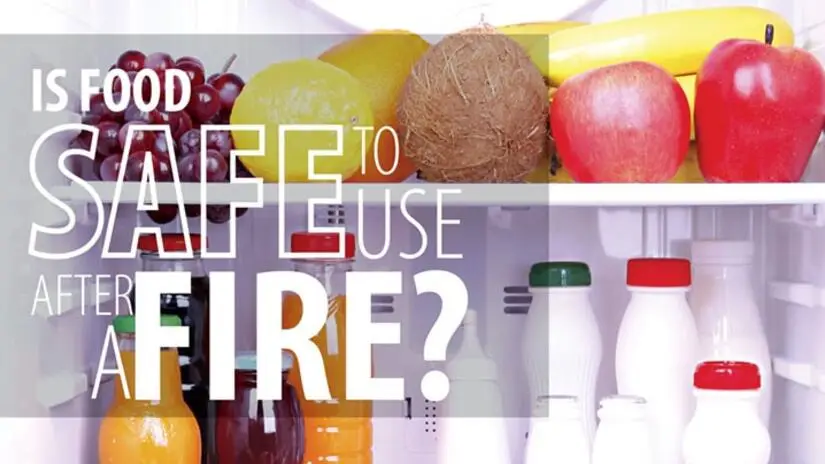
After a fire, food safety is a major concern. Rainbow Restoration advises caution when determining if food is safe to use.
|
Fire damage is much more than just flames. Long after the fire is put out, smoke damage and remnants of the extreme heat and firefighting chemicals remain. If a fire breaks out in your home or commercial kitchen, is the food you had stored there safe to eat, or should you throw everything out? Follow these tips from the Minnesota Department of Health to clean up the damage and determine food safety after a fire.
Deciding if Food is Safe to Eat
- Canned and jarred food: The extreme heat from a fire can cause cans and jars to crack, spilling out the contents and contaminating the food. Even if cans and jars are intact after a fire, prolonged exposure to heat could cause the food to spoil. Smoke and chemicals can also seep under bottle caps and screw top lids. The verdict? Throw out canned and jarred food after a fire, even if the seal doesn’t appear to be broken.
- Food stored in permeable packaging: Cardboard, plastic wrap and foil are permeable, meaning smoke has almost certainly tainted the food stored inside. Unwrapped fruits and vegetables are also damaged from fire exposure, so throw them away as well.
- Food stored in the fridge or freezer: You might have hope of keeping refrigerated or frozen food, but fridge and freezer seals are not airtight. Fumes could have gotten inside and tainted the food here as well. Throw anything away that has signs of smoke damage or gives off funny odors. All ice should also be discarded.
- Power failure: After you return to the building following a fire evacuation, you might not be sure whether the power went out during the fire. Check for signs of damaged food in the fridge and freezer, such as liquid or refrozen meat juices, or melted ice cream. Unusual colors, odors and textures are also signs the food has been damaged. If you see these signs, discard all food you were keeping refrigerated or frozen.
- Food touched by firefighting chemicals: If you put out the blaze with a fire extinguisher or other fire suppression method, don’t think twice about discarding the food. Firefighting chemicals are poisonous and can’t be washed off. These chemicals can even permeate packaged products.
- Cutlery: Plastic plates, cups, utensils and other cutlery exposed to smoke and firefighting chemicals are not safe to eat or drink out of. Throw them away.
- Points to remember: If food is deemed unsafe for human consumption, it’s also not safe for pets. Never taste food to determine whether it’s safe. In the end, when it doubt, throw it out! It’s a shame to feel like you’re wasting so much food and drink, but the alternative is to eat contaminated products that could make you sick. It’s not worth it!
Cleaning Up Fire Damage
Before you start using your home or commercial kitchen again, you must clean and sanitize all surfaces. Even a seemingly clean countertop could have remnants of chemicals and fine particles leftover from the fire. Smoke damage can also wreak havoc on the walls and building structure.
If you want to open your commercial kitchen back up without delay. The most thorough way to clean up fire damage is to seek professional commercial fire remediation services.
Contact Rainbow Restoration® today by requesting an appointment online or call us for fire restoration services you can trust.
Other Related Blog Posts:
